The Golden Age of comics, roughly from 1938 to the late forties, was an amazing time to be involved in this unique art form. The modern comic book was born, and with it came the boom in sales that spurred the creation of many of our most beloved characters. Welcome to Sequential History: The Golden Age.
In previous editions of Sequential History we’ve discussed the history of sequential art from ancient times all the way up to the platinum age, which ended in the late thirties. This is when things changed. We’re talking monumental, boldly going where no comic has gone before type of change. Comics would never be the same after the dawn of the Golden Age.
The Beginning
Many say that it all started with Action Comics #1, and the introduction of Superman. Though not the first superhero, nor always the best selling, the birth of Superman heralded the beginning of the modern comic book. He would set the pattern for heroes to come. Upon seeing the success of Superman, editors from all over ordered their creative staff to create superheroes like the Man of Steel. The race was on to cash in on the superhero craze. Comic creators got busy, and some of the greatest characters of all time were created during this superhero rush of the late thirties and early forties. Batman is one of them. Bob Kane worked to create a superhero, after a request from his editor, for a character that could match the selling power of Siegel and Shuster’s mild mannered boy scout from Kansas.
Before Superman, and for a long while after his introduction, the majority of comics published were not superhero stories. There was a great variety of books. These included westerns, war stories, jungle stories, romances, humor books, and some featuring Mickey Mouse, Donald Duck, and characters from movies and other media. These books frequently outsold superhero titles. This should come as no surprise really, seeing as how these types of books had been around for years before Superman appeared. Regardless of the sales, this was the age of the superhero.
Early Success
Action Comics became a giant hit. It was the best selling comic book, with the top hero. Batman came along a short time later, in Detective Comics #27, and also found great success. By 1940 there were several heroes and villains for the public to enjoy. Then in February of 1940 came another strong man, Captain Marvel in Whiz Comics #2.
Captain Marvel rose to great popularity, and so did his books. Whiz Comics attained huge numbers for its time, reaching well over a million copies a month in distribution. Fawcett Comics was really taking advantage of the hype that Superman had started. National Comics (later becoming DC Comics) saw Captain Marvel as a rip off of Superman. They sued Fawcett for copyright infringement. Ultimately, in 1953, Fawcett stopped publishing comics, and settled the case. This wasn’t solely due to the suit however. The market had been in decline, and was in serious trouble. By 1980, DC had purchased Captain Marvel and his associated characters free and clear.
Several legendary and rather prolific artists got their start in comics during the Golden Age. Some of them include Jack Kirby, Bill Finger, Jerry Robinson, Will Eisner, and Stan Lee. There were ground breaking innovations during this time. From the artwork, to the layout of the pages, to the business side of things. The creators and others involved in comics in the Golden Age forged the foundation of the industry we have today. Much progress was made in the Silver Age, there’s no doubt about it, but the groundwork was done in the late thirties and early forties.
The War
When World War II rolled around, several creators took part in it. Some having their talents put to use by the armed forces. Notable among these was Jack Kirby. He, like many in the profession, returned to comics after his service. But things weren’t really the same.
Comic books, especially superhero books, became popular during the War. Something about good winning out over evil, touched people. Also, images like the cover of Captain America Comics #1 didn’t hurt their popularity either. Anything that depicted Captain America taking it to the Nazis was going to get some interest right off the bat, which is what Cap did on a regular basis. His constant foe, Red Skull, made his debut during one such story of battle in the European theater.
Decline
The years after the War and before the introduction of the new Flash (Barry Allen) in 1956 were very rough on comics. The popularity of superheroes had waned. There was increased interest in crime and horror comics. There was also pressure to clean up comics.
Comics were held by many around the country to be a corrupting influence on young people. In 1948 there was public criticism, city ordinances banning some comics, and even reports of comic book burning in several towns across the country. Superman had finally met his match.
Then there was Dr. Fredric Wertham, a psychologist convinced that comics were in fact a bad influence on kids. He published articles, and campaigned to get comics regulated, or worse. Well, he succeeded to some degree. Comic creators became rather restricted in what subjects they could handle, and what content they could put in their books.
Then came Dr. Wertham’s book, Seduction of the Innocent, and even Congressional hearings to investigate the danger that comics posed to America’s youth. That’s right, while in the midst of chasing communists, and during the same year that the Supreme Court decided on Brown v. Board of Education, comics went on trial before Congress.
Comic book artists even declined to publicly admit what they did for a living. Some even opting to tell people that they partook in illegal activities, like Joe Simon telling people he was a bookie. You had some of the most gifted artists ever calling themselves “line artists” instead of comic book artists. It was truly a sad time for comics. However, some titles soldiered on.
Superman, Batman, and several others pushed ahead during this tough time. Some titles didn’t make it. Captain America Comics, as well as a few other Timely (later becoming Marvel) books came to an end, or changed the type of their content. It wasn’t until 1956 that things picked back up again.
Products of the Golden Age
Though it was a relatively short period of time, lasting from the late thirties to the mid-forties, the Golden Age was incredibly fruitful. Below is a list of some of the notable characters that were created during this time period, and which year they debuted. Some years were lean for creativity, so I included some of the not so memorable characters from those years.
1938
- Superman — Originally Superman didn’t fly, merely leaping great distances.
- Lois Lane
- John Zatara (father of modern heroine Zatanna)
1939
- Angel (Thomas Halloway)
- Batman — Originally, Batman didn’t keep himself from taking a life.
- Blue Beetle (Dan Garrett)
- Human Torch (Jim Hammond)
- Namor
- Ultra-Humanite
1940
- Alan Scott (Original Green Lantern)
- Lex Luthor
- The Spectre
- The Atom (Al Pratt)
- Captain Marvel
- Joker
- Uncle Sam
- Catwoman
- Hawkman
- Hawkgirl
- Flash (Jay Garrick)
- Robin (Dick Grayson)
- Hourman
- Dr. Fate
- Hugo Strange
- Clayface (Basil Karlo)
- Toro (Human Torch)
1941
- Captain America
- Golden Girl
- Red Skull
- Bucky
- Aquaman
- Doctor Mid-Nite (Charles McNider)
- Green Arrow
- Red Arrow
- Patriot
- Plastic Man
- Miss Cosmos
- Penguin
- Starman
- Whizzer
1942
- Wonder Woman
- Wildcat
- The Shade
- Manhunter (Paul Kirk II)
- Gay Ghost (Keith Everet)
- Two-Face
- Liberty Belle
1943
- Miss America
- Brain Wave
- Alfred (Bruce Wayne’s butler)
1944
- Solomon Grundy
- Mister Mxyztplk
- Vandal Savage
1945
- Black Adam
- Superboy
- Psycho Pirate
1946
- Crazy Quilt (This guy isn’t so notable, but he’s an example of the wackiness that existed back then)
1947
- Black Canary
- Gentleman Ghost
- Icicle
- Vicki Vale
1948
- Mad Hatter
- Riddler
1949
1950
- Deadshot
- Lana Lang
- Jonathan Kent
1951
- Captain Comet
1952
- Phantom Stranger
- Firefly
1953
- Superman’s Brother
- Gorilla Boss
- Roh Kar
1954
- Jimmy Olsen
- Space Cabby
1955
- Krypto
- J’onn J’onzz (Martian Manhunter)
- Ace the Bat-Hound
I don’t have the space available to do justice to the contributions that the Golden Age made to comics, and to our culture in general. When contrasted with other forms of artwork, comics don’t have the monetary value of paintings, or the critical acclaim of literature and poetry. However, the influence of the characters and creators that came out of that period is truly incalculable.
As corny as it may sound, how many lives has Superman touched? Over the past seventy plus years, plenty, that’s for sure. And he’s just one character. How many people first developed reading skills, or a love of reading, through comic books? We could go on for awhile like this. Fact is, the Golden Age produced some of the greatest creative works that we have. Many of those characters are enduring to this day, with no end in sight.
Next time we’ll look at the Silver Age of comics. Until then…watch your top knot!
Eli Anthony
eli@comicattack.net



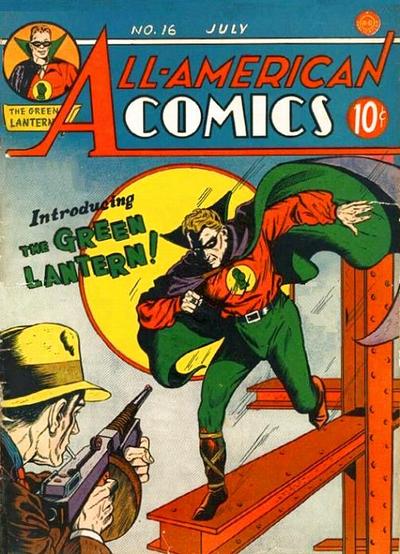
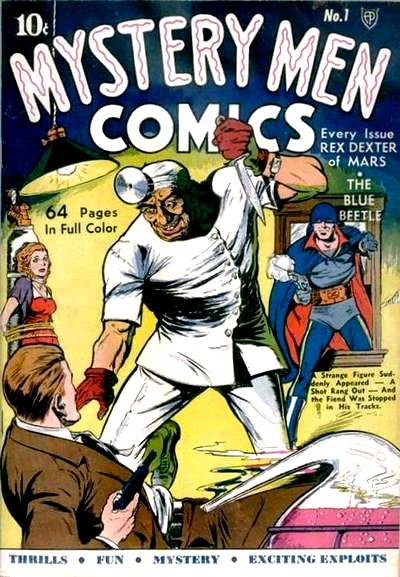
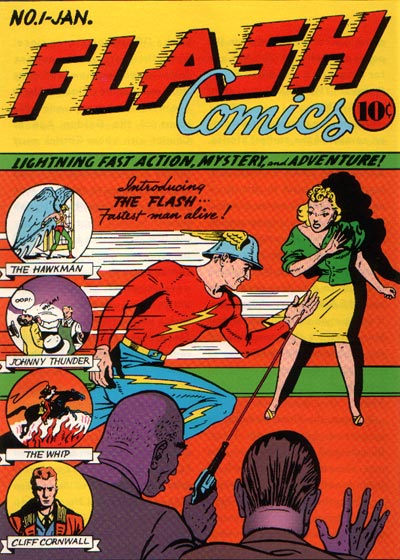
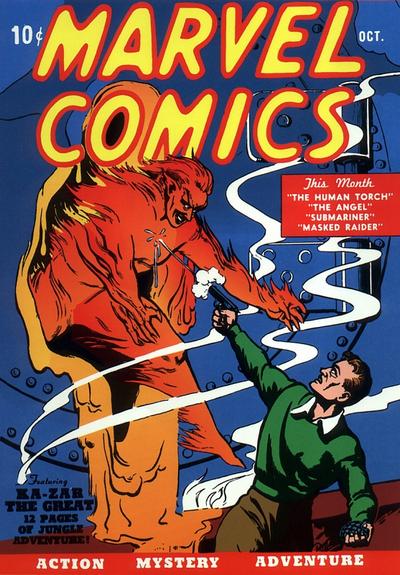
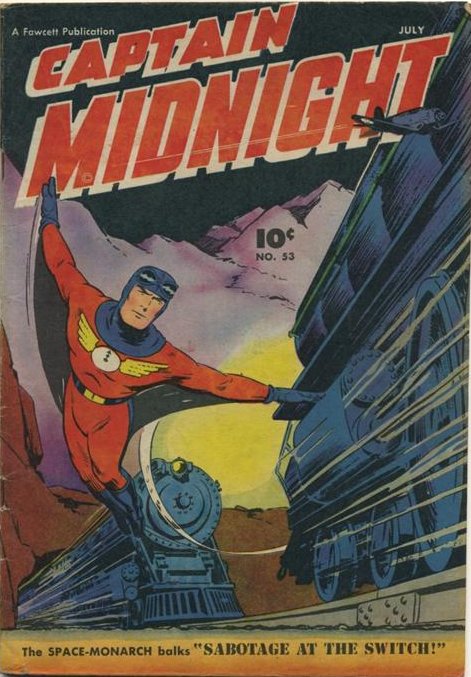
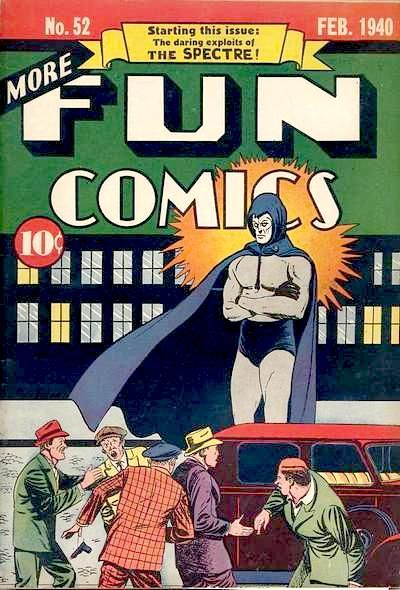

Good writing, Eli!
Holy crap, Ultra-Humanite has been around since 1939!!! Great article dude.
Pingback: Tweets that mention Sequential History: The Golden Age -- Topsy.com
Thanks guys.
@ Billy – Yeah, I was very surprised to find out that Ultra-Humanite is over 70 years old. Credit another winning idea to Jerry Siegel & Joe Shuster.
Wow, great stuff here Eli.
Isn’t it ironic how this time period is called the “Golden” Age? For the characters created during this time, sure, it was, but for the artists and writers creating the work? It sounds like things were less than “golden” for them…
Those terms always reflect what was produced, and rarely anything about the state of the creators or the process. The Golden Age of Hollywood had some horrible behind the scenes practices, but the movies that came out of there were spectacular.
Pingback: Going to Add Some Books Tonight | Trade Reading Order
@billy, check out Superman Chronicles to read the stories – they’re actually pretty fun. Well worth picking up.
I’m reading the Golden Age Spectre archives myself, right now. Out there!